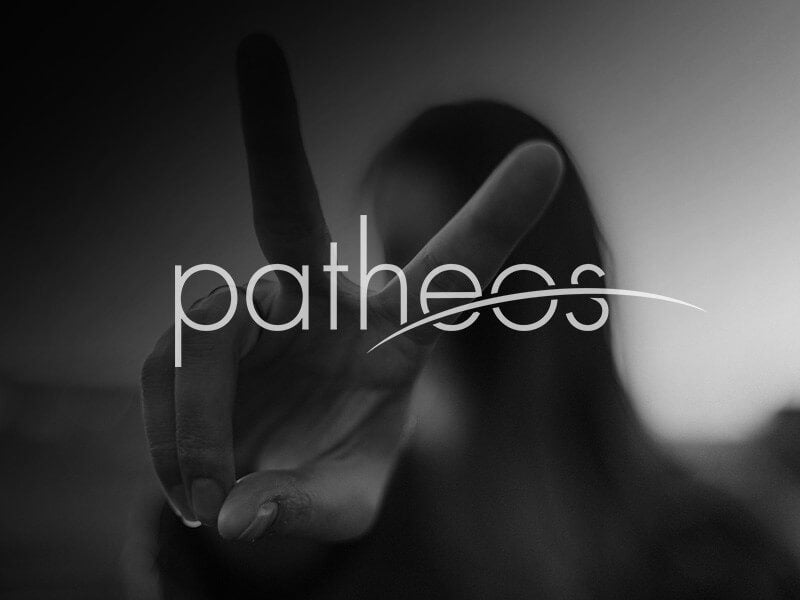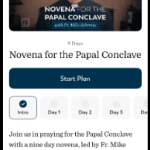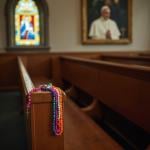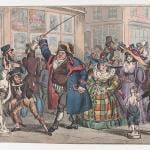Since I earlier posted on Vox-Nova Archbishop Dolan’s full, expanded Op-Ed to the NYT, I thought it would be only fair to give this response that NYT columnist Laurie Goodstein submitted on the archbishop’s blog.
A Response to Archbishop Dolan
I am the national religion correspondent at The New York Times, and sent this letter to Archbishop Dolan yesterday. I would like to share it with the readers of his blog. Dear Archbishop Dolan, I was very disturbed to read your blog post about The New York Times, and about my work and that of my colleagues as “anti-Catholic.” You write as though the Catholic Church is some sort of special target, when in fact any institution that is accused of wrongdoing receives critical coverage and commentary. As you know, the Catholic Church is the largest religious institution in the world, and a quarter of Americans are adherents. The Catholic Church is a hierarchical church with a clear chain of accountability. It is only natural that it receives such scrutiny. As you acknowledged in your blog, there are recent developments in the Church that are “well-worth discussing and hardly exempt from legitimate questioning.” So when a newspaper undertakes this kind of coverage, it should not be seen as anti-Catholic. If so, we could equally be accused of being anti-Every religious group that we have called to task, and there are many. You cite Paul Vitello’s front page story about sexual abuse in the Orthodox Jewish community as evidence that the Times is anti-Catholic. Paul and I find it a hard argument to understand. The Times has written about the sexual abuse of minors by clergy of many faiths: Jews, Southern Baptists, mainline Protestants, Jehovah’s Witnesses, Orthodox Christians, evangelicals. But the abuse story has been bigger for the Catholic Church simply because of the quantitative facts: there are more priests accused, more alleged victims, more countries involved, more settlements, more years since the problem first became public, more legal and financial consequences and simply more people affected. In mentioning my piece about a priest who had an affair with an adult woman, you imply that there was no reason to run a story now that is 20 years old. You neglected to acknowledge that this piece was written now because the priest’s son is dying of brain cancer, he believes the church and the priest have failed him, and because the priest was still serving in a parish where neither his parishioners nor his bishop had knowledge of his philandering until I began reporting. One of the women he was involved with was allegedly a minor, and at one point the priest suggested that a pregnancy he was responsible for be terminated by an abortion. I wrote the story because church officials have said privately to me over the years that priests who violate their vows with adult women are far more common than priests who sexually abuse minors. Also, I have also been contacted over the years by adult women in similar situations. I wrote about this woman because she was willing to go public with her experience and had the legal documentation and photographs to prove that this was more than a case of he said/she said. You claim that the Times ran this story instead of covering Afghanistan, health care and the Sudan, but as you know the Times is regularly full of stories about all these issues. And finally, you cite as “anti-Catholic” the coverage of Pope Benedict XVI’s new structure for welcoming traditionalist Anglicans into the Catholic Church. The Times’ story did state clearly, as you pointed out, that the arrangement was a response to requests from some Anglicans. Certainly, the Vatican is “welcoming” these Anglicans, but many other Anglicans feel as if the church were making a bid for their allegiances. Our story used language reflecting these various points of view. Our coverage did not differ much from most of the media coverage, except that we were far more tempered than some. Archbishop Dolan, you and I have known one another since we first met in Rome in 1998 when you were rector at the North American College. We met again years later when I was doing a story about you and several others whom I dubbed “Healer Bishops” who were trying to help the church recover from the scandal over sexual abuse by priests. I am pained that your blog selectively overlooked all the articles in the Times that you and other bishops in the church have praised over the years because you found them fair, and there are many (including some about your appointment to the Archdiocese of New York). This is why I cannot accept your characterization of the Times as “anti-Catholic.” This weekend, I am going to the conference of the American Academy of Religion, the largest society of religion scholars, to receive their top journalism award for a three-part series I did last year on the Catholic Church. The subject was international priests serving in the church, and the series included stories about a Kenyan priest beloved by his Kentucky parishioners, an American vicar who selects foreign priests to serve in his diocese, and why so many young Indians choose vocations in the Catholic Church. To do these pieces, I spent many weeks in American parishes and a week living in a seminary in India. If the Times were “anti-Catholic,” why would it devote the reporting time and three consecutive front page stories to a fair and affectionate look at the contemporary Catholic Church? Sincerely, Laurie Goodstein National Religion Correspondent The New York Times
Posted By: Laurie Goodstein
















